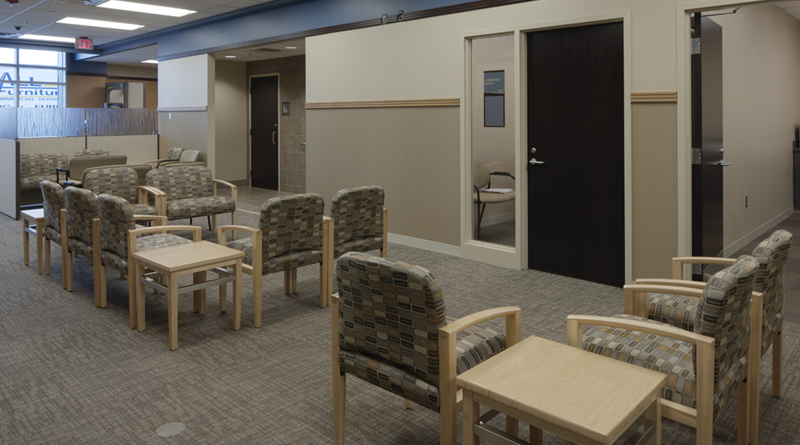Transforming Juvenile Detention Centers into Community Hubs for Assessment and Care
By Roger Schroepfer and Aimee LaLone
As a firm with significant government design expertise, we know many of our public sector clients find it challenging to effectively address behavioral health crises in their communities, especially when working with young people. Many times, minors detained by police suffer from mental health or substance abuse issues but have not committed a crime to allow for detention. If police officers determine a detained minor won’t face charges, the juvenile must wait to be picked up by parents or other guardians in what can turn into a traumatic environment. Rather than being placed in a safe, quiet space, they are typically held in police stations or juvenile detention facilities.
Traditional models rely heavily on law enforcement officers to assess situations in which minors are at risk, but they often have not been equipped with proper tools or training to do so. Detention facilities frequently act as de facto holding areas for individuals who may need specialized treatment or to be moved to a different space. To better help these young people get the care they need, some counties and communities are adding crisis assessment, or crisis care centers, to their detention center facilities. Oftentimes, multiple cities within a county collaborate with community and religious organizations to financially support the creation of crisis assessment centers.
Crisis centers are growing in popularity because they are designed to accommodate a range of crises, from mental to medical, and provide a safe place and continuum of care to minors in need. These centers create a central location for officers to drop off detainees and quickly get back to patrolling. Once in a crisis assessment center/care, young people have access to screenings, assessments, referrals and counseling professionals who can provide emotional support and ensure they receive the appropriate care.
Here are 3 reasons why crisis assessment and crisis care functionality should be considered when planning new juvenile detention facilities:
Create safer communities
Crisis centers take a proactive rather than reactive approach to addressing juvenile behavioral health. Upon arrival at a crisis center, young people are typically assessed and receive counseling options or information on other resources that can address their needs.
They can also receive a referral for follow-up services and care, whether at a hospital, mental health facility or detox/rehabilitation facility. Providing juveniles with proactive solutions and ensuring they receive the help they need creates safer communities and decreases the likelihood of minors hurting themselves or others in the future.
Decrease recidivism
Some juvenile justice systems, especially in smaller communities, lack the ability to support and provide sufficient mental health services for detainees, which can increase recidivism. Crisis centers can also be a familiar place to provide post-detention resources to keep up with a youth’s progress and treatment.
These services are especially helpful when crisis centers are directly attached to detention facilities and deliver continued care from incarceration to reintroduction into society. Ongoing care makes these centers successful and helps reduce the number of reoffenders.
Save taxpayers money
Over the past decade, the responsibility of mental health has shifted from state governments to local governments. Smaller cities struggle to keep up with their community’s needs, and many who suffer are met with dwindling solutions. With limited access to resources, law enforcement officers typically have only two options when responding to a person in a mental health or substance crisis: detention facility or the emergency room. Both choices are expensive operations to run.
A crisis center can be a good third option to provide local officers or family with a centrally located, fully equipped facility that reduces the time and money it takes to hold detainees and allows officers to return to duty.
How to design a comforting and functional crisis assessment and crisis care center
When designing crisis centers, visitors should expect professional service in a caring and supportive environment. Many people who arrive at these centers have histories of trauma, and a supportive environment is paramount. As designers, it is important to consider what will make young people feel at home and comfortable while getting access to the care and services they need. By focusing on design principles that are restorative, facility administrators in partnership with architects can foster rehabilitation and create spaces in which young people can access the resources they need to thrive.
Roger Schroepfer AIA, LEED AP, BD+C, NENA, is a government leader and partner at Wold Architects and Engineers and can be reached at rschroepfer@woldae.com. Aimee LaLone AIA, LEED AP, BD+C, is a government leader and associate and can be reached at alalone@woldae.com.

